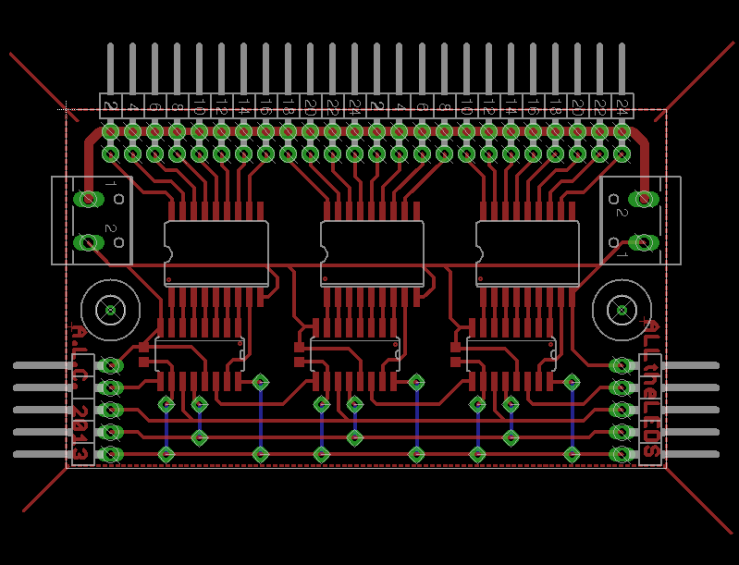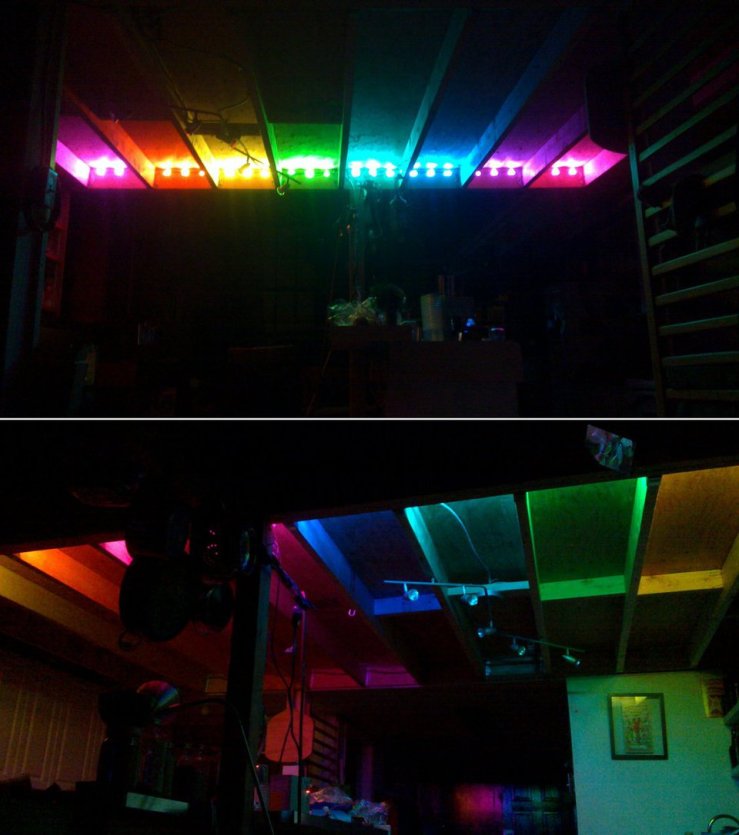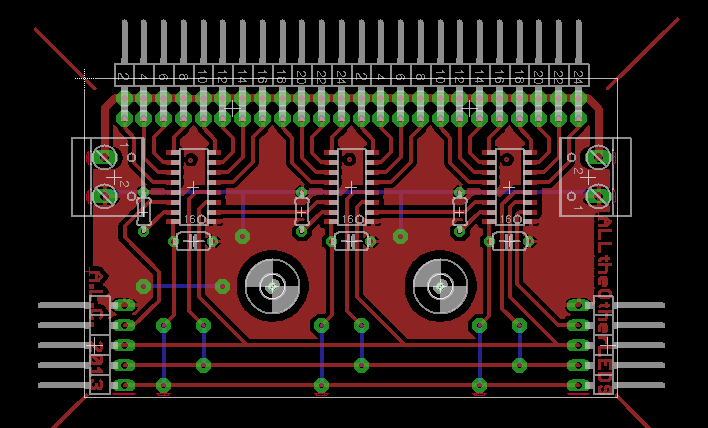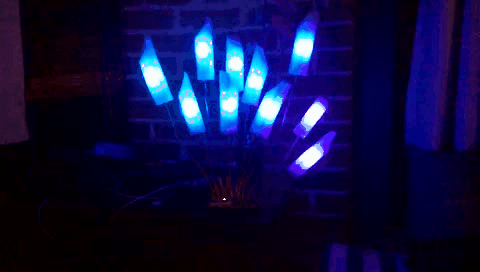So yes, after the WS28xx revolution (that is dedicated LED controllers or even LEDs with integrated controllers), the problem of controlling a lot of (RGB) LEDs has almost vanished. but then you dig out this box with a LOT of RGB LEDs in it that are just waiting to be PWM controlled. you are not gonna throw them out, are you?
when i learned about Elco Jacobs’ amazing ShiftPWM Arduino Library, i knew all i needed was a little general purpose driver board to light all that LEDs up. the library basically uses shift registers and a high frequency serial signal in order to PWM control a lot of LEDs on just three Arduino pins. handy enough, i was introduced into etching PCBs at the same time, so there it was, my first etching project.
the LEDs i was dealing with were square modules containing three or four 5050 RGB LEDs (common anode). so besides generating the PWM signals, i also needed amplification, because those things run on 12V and consume around 200mA each. we had a bunch of ULN2803 available in the lab, which already served me well in other LED projects.
i designed a board that was easy to manufacture, single sided and chainable. it is called ALLtheLEDs because it can control all the LEDs we found.
we built several of those driver boards which are chained and hooked up to an Arduino. they only contain the 74HC595D shift registers, the ULN2803 darlington arrays and blocking capacitors. the data lines run separate from the power lines. each board provides 24 channels, enough for 8 RGB LEDs and up to 30V / 500mA per channel. one of these boards was used to control our rainbow kitchen:
now we also had bags of regular 5mm RGB LEDs in the lab, and on top of that we had a lot of SMD TLC5916 chips. those nifty devices are basically shift registers with an integrated current control for LEDs. this means you do not need resistors for each LED, you just hook up one single resistor to the chip to configure the current per channel. apart from that, they work just like regular shift registers. i designed another board for those chips and simply called it ALLtheOtherLEDs:
this board is also capable of driving 8 RGB LEDs, but at a maximum of only 120mA per channel. i use one of those boards to control several light sculptures, for example this one:
the Eagle files for ALLtheLEDs and ALLtheOtherLEDs are available in my repository:
if you have any suggestions or questions, please comment!



